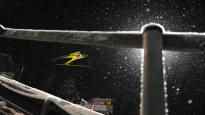There isn’t a winter without a buzz about the ski jumping suit and the rules for it. This is also the case this season. Changes have been made to the mountain suit, e.g. to the collar and the waist area, but the changes came into use quite late, so the teams had to rush to test the suits.
Niko Kytösaho and Eetu Nousiainen reminded that the Finnish team does not have a problem in this regard, but small ski jumping countries suffer.
– We still have a good situation when we have the opportunity to test. If it’s not possible to put training versions on the suits, then it’s not fair game, Nousiainen said.
Kytösaho feels that these rule changes are just one change among others, and he doesn’t even know what the change was trying to achieve.
– There was no need to change those rules. It also took us a long time before we got suits that fit these rules. Everything became new in a way, Kytösaho said and was satisfied that he had now gotten a competitive suit for Ruka.
– There was no such thing in Wisla yet.
Jukkara: A big ship turns slowly
Mika Jukkara led the equipment control of the International Ski Federation (FIS) last season. According to him, the rule changes seek above all clear equality. They also sought clearer lines for controlling equipment.
– The changes are partly based on the fact that sewing techniques have developed so much. The suit has been able to be stretched so much through the sewing technique that, for example, the material has been made to go downwards, Jukkara explained in Urheilustudio.
Sports expert Janne Ahonen there is nothing wrong with the rules, but the biggest problem is in the control. In how the control is handled and monitored and how fair it is. Another expert from Urheilu shares the same opinion Petter Kukkonenwho, as the head coach of the combined team, clashed several times with the FIS regarding the rules for ski jumping suits.
– The control is very arbitrary, and it takes place in closed premises. It is not transparent. Nobody knows the measurements that were taken there, how they were taken, whether they were taken in the same space, for the same tester, Kukkonen listed the problem areas.
Jukkara does not sign all of Kukkonen’s criticism. According to him, the need for change was great compared to previous years and something was also done about it.
– In my opinion, we accomplished quite a lot, but of course a big ship always turns slowly. However, I think that last season the suits were more equal than before and the control was clearly more precise, Jukkara said.
According to Ahonen, with Jukkara, there were rats in the operation last season, but the changing gauges cause problems.
– Measurements are taken with a tape measure, and with the other measure slightly at an angle. It becomes a difference of a couple of centimeters easily and the athlete is in trouble again, even if the suit is not too big, Ahonen said.
“The neutral party is missing in every point”
According to Jukkara, the reason why the measurements and costume checks are done behind closed doors is to protect the athletes’ privacy. Last winter, Jukkara and his followers, Austria Christian Kathol often did inspections together and the presence of two people was perceived as more open.
According to Jukkara, there has been a lot of discussion about openness, and FIS is also willing to do so. Ahonen reminded that, for example, in a doping test, a doctor supervises the testing situation, and the presence of a doctor could prevent, for example, the “dishcloth episode” of a couple of seasons ago. Petter Kukkonen, who was the head coach of the team at the time, admitted to Urheilu that he told his athletes to stuff dishcloths into the measurement situation in order to get more volume in the crotch of the suit.
– Why can’t there be a doctor at this point to see what’s inside the pants. An athlete doesn’t hesitate to take a doping test either, so it shouldn’t be a problem, Ahonen said.
In doping tests, the supervisor is external, and it could be a good solution for equipment control as well. The problem is money, but also the fact that switching to an external controller takes time.
According to Kukkonen, at the moment the athlete’s legal protection does not materialize if something happens, because at that time the FIS is investigating its own problems.
– The neutral party is missing from every point in this system. Transparency and openness according to the standards of today’s society is still a long way off, Kukkonen stated.
